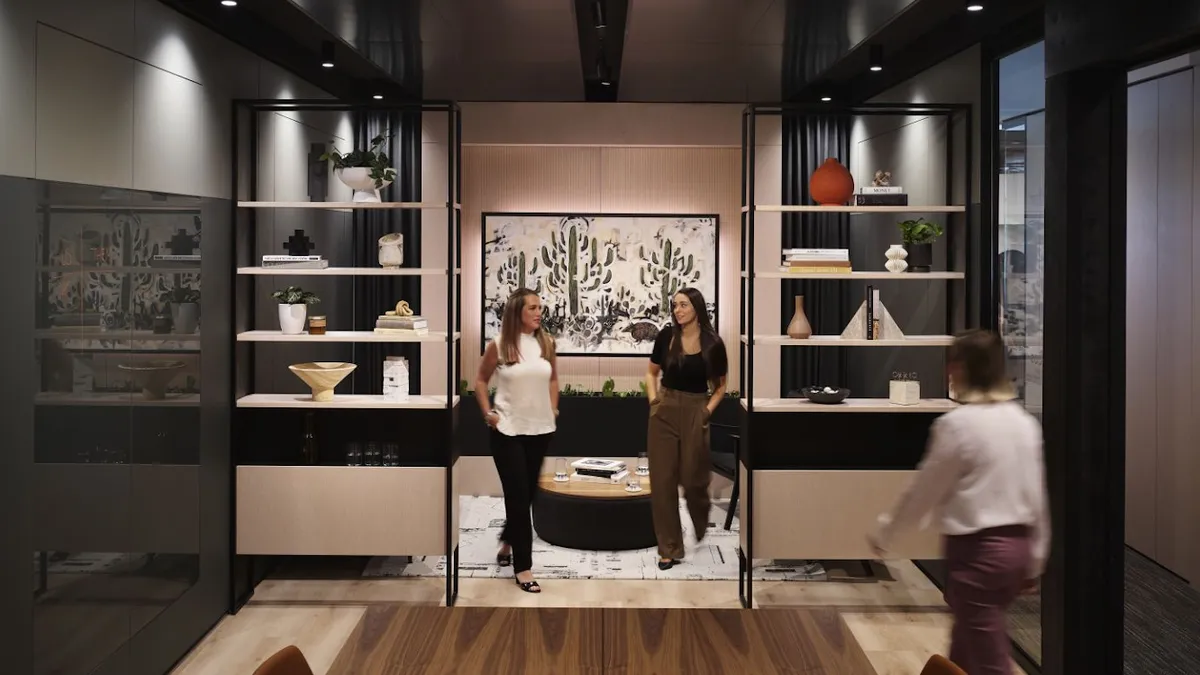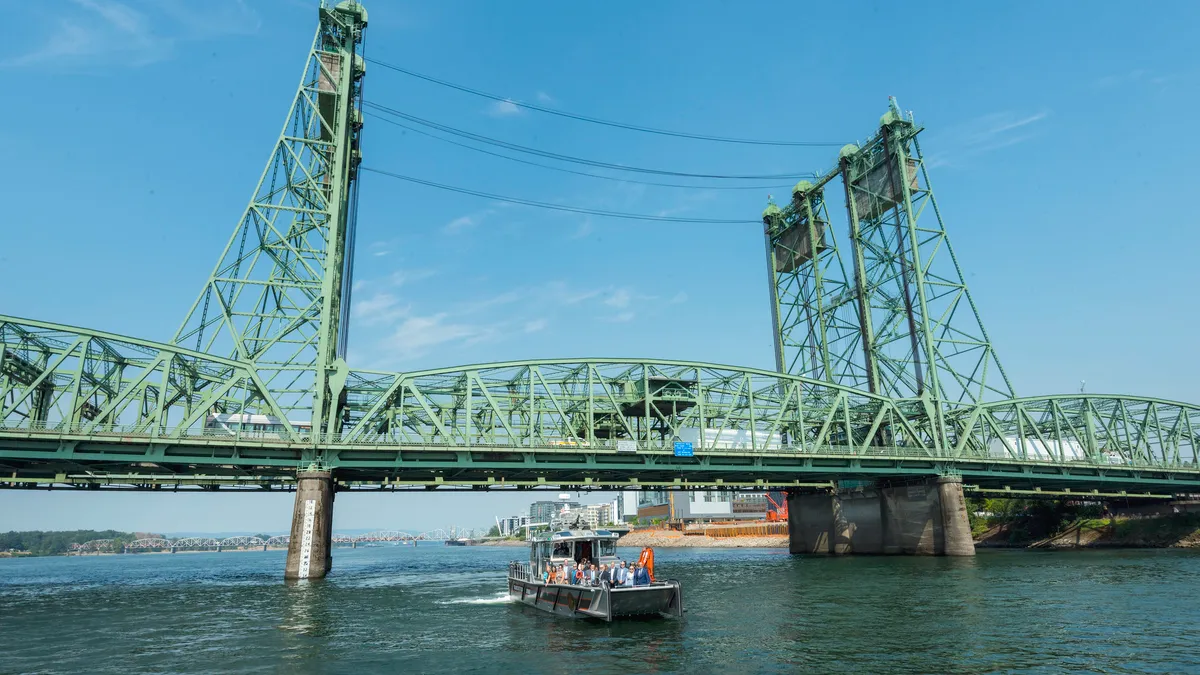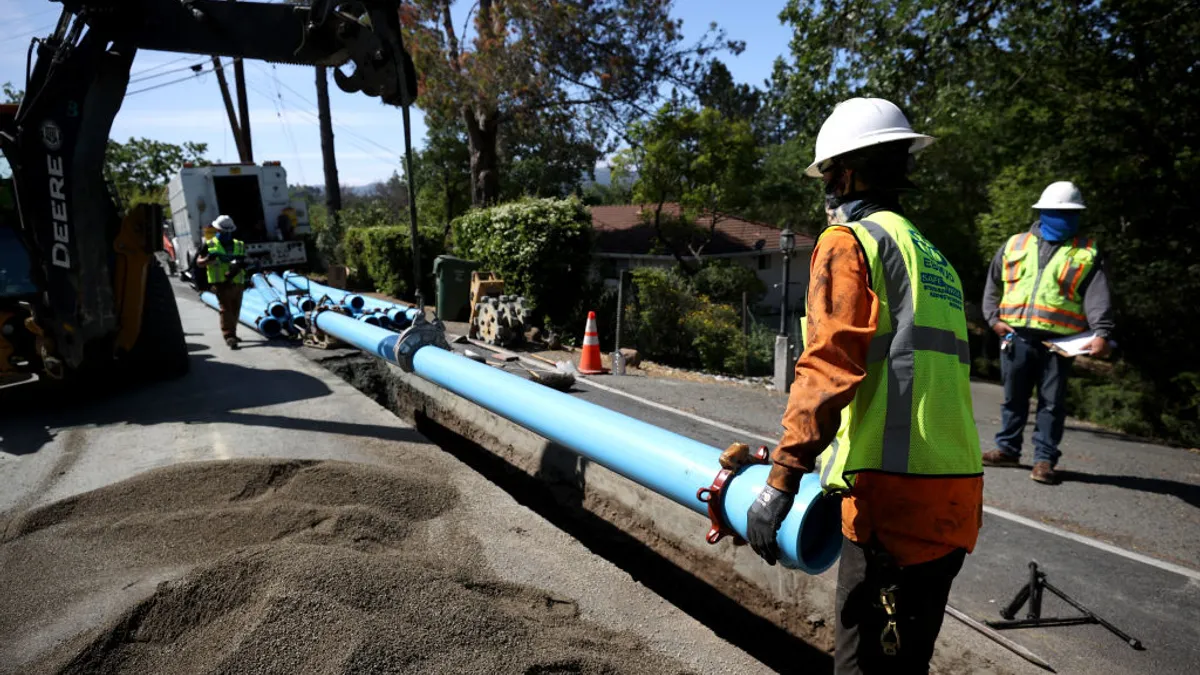Jessie Stenftenagel sits in an interview chair trying her best to ignore the flashing red light on the video camera in front of her, while an oversized light teeters on a tripod five feet away. Outside of the glass-walled room she's in, dozens of construction leaders mingle about an event, glancing over occasionally to see what's happening inside.
An environmental scientist and senior sustainability strategist at DIRTT, Stenftenagel is one of several professionals being interviewed on how the construction industry will be shaped by the pandemic, key ingredients for resilience and what lies ahead.
The interview starts out with gathering background information and as soon as the words "building decarbonization" are uttered, she perks up, smiles and dives in.
"Now more than ever, companies, healthcare institutions and higher education are thinking about sustainability and environmental goals that they need to work toward," she says, teeing up an argument about where focus should be placed.
Stenftenagel knows there is a long list of things construction organizations need to do in order to operate more sustainably, but she wants construction leaders to think inside the box as well.

"Clients often think it's just about the building shell," she says. "Interiors were largely left out of that conversation. If you're building out a space that's going to potentially last you for 30 years, you need to keep those materials in play. You're contributing to a circular economy and keeping waste out of a landfill."
Stenftenagel says decarbonization goals that include interior as well as exterior construction will help organizations on their path towards reducing their carbon footprint. For example, network efficiency has historically not been considered within overall building calculations. However, fiber optic network infrastructures can be installed as an alternative to traditional copper solutions saving in the raw material extraction impact and on the energy used to run the network once in use.
"There's a real potential, depending on the size of the project, to reduce the energy that's going into the space as a result of removing IT closets and being able to run a fiber cable 12 miles as opposed to [copper] running 330 feet," she says. "All of those things are starting to contribute to decarbonization."
Stenftenagel is excited about decarbonization as a focal point, but also as a general sustainability trend, as organizations everywhere are increasingly focused on their overall path toward reducing their carbon footprint.
Modular components deliver sustainability benefits and improved occupant experience
According to a 2021 McKinsey report, more than half (53%) of senior construction executives say the COVID-19 pandemic accelerated sustainability as a focus for the industry. In addition, 10% said they had already increased investments in sustainability since the start of the pandemic.
Construction leaders pursuing a more sustainable way of building interior space should think about the parts and pieces that make up their space as components of an interior system. Stenftenagel gets excited talking about modular and prefabricated interiors for this reason, as they are designed to fit together and adapt, and components can be swapped out to reduce waste and allow for reuse.
"I think that piece of it is really important, especially when we start to talk about the idea of design for disassembly and reconfiguration," she said.
Adapting and reconfiguration are among the biggest demands coming from architects, designers and facilities leaders who manage space right now, and virtually all of our interview subjects touched on their growing importance.
The primary driver? Leaders in many industries want space that can flex to the changing needs of occupants, and improve their overall experience. And that's not always an easy task, especially when your building or space caters to a diverse group of users who need different things.
Case in point, says Chantily Malibago: The healthcare industry
As Director of Real Estate Development - Healthcare at Mortenson, Malibago says each generation expects different things from their space and that is an important consideration when building.
"We still have the largest aging population, reaching years where they're going to need some of the most complex care," she said. "Behind that aging population is a smaller cohort of generation Xers that just isn't large enough to backfill some of the space demands that the boomer population will have. And even behind the generation Xers are a cohort of millennials who consume healthcare differently."
Malibago says younger generations are more technology-savvy than their parents or grandparents, and they are also more likely to use convenience care locations to access healthcare.
The needs of each group vary and so generational differences should be a factor when designing healthcare spaces.

"The question of modularity or flexibility has been this ongoing conversation and consideration with healthcare leaders for quite some time," she said. "How are we using our spaces to be able to deliver care? And how can we use modularity in construction and design to be able to flex the spaces to adapt?"
Malibago believes that modular components can be part of the solution for building resilient healthcare spaces, citing Mortenson's recent survey on how the COVID-19 pandemic impacted healthcare providers. In addition to modular components, she believes true success comes when you marry the built environment with processes and strategies that address how people use the space.
In healthcare, that is both patients and staff.
"A strategy that integrates within your facility's space and that is designed for employee well-being — your providers and your staff — is incredibly important," Malibago said. "Now more than ever, as staff have been put in this place of ongoing fatigue."
Optimize space to optimize employee experience
Cynthia Milota, Director of Workplace Strategy at Ware Malcomb, couldn't agree more that a space needs to be optimized around employee experience.
"Workplace strategy is really about taking people and place, and making effective workplaces," she summarizes. "Clients are more laser-focused on how the last couple years have impacted their employees and their businesses. Leaders are more interested in providing stellar workplaces for their staff now more than ever."
One of the major headline-grabbing stories in the pandemic has been the rise of the hybrid era. As a response, Milota says that leaders need to think about their space as a competitive advantage for attracting and retaining their employees.

"People have more choice than they had before. Employee experience is super dynamic — it's changing. My experience is going to be potentially different from yours."
To create a space and working environment that is flexible and meets employees' needs, Milota says companies need to monitor how their real estate is supporting their teams. Proactive organizations will be agile and will pilot new workplace strategies.
"I like this idea of the agile environment to a glass ball and a rubber ball. This metaphor was first coined by Bryan Dyson in a 1988 commencement address. The glass ball is fragile. What in your organization is considered fragile? What is resilient? What's the rubber ball?"
The rubber ball components of a business and a workplace are the areas to encourage flexibility and experimentation, she says.
You can test adapting space or adjusting processes, or both. The most important factor, Milota says, is to continuously invest in forward momentum without expecting the strategy to be perfect right out of the box.
"If you have an iterative release model, as you consider your return to the office, then that takes the pressure off establishing the perfect solution," she said. "And of course, incorporate a feedback loop. People don't want to be changed — they want to be part of the process.






